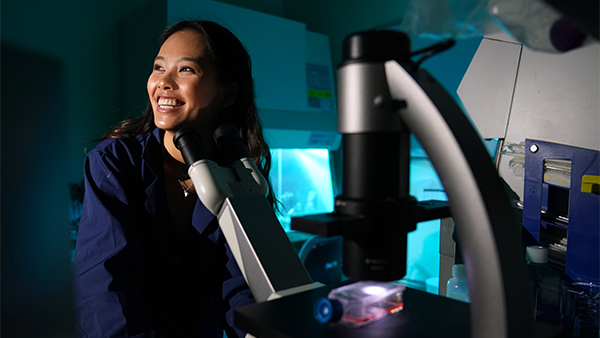In the spring 2020 issue of the Fresno State Magazine, read about the many ways our students, alumni and faculty have adapted to challenging times, and how they are using their knowledge and skills to contribute to community needs.
The more we grow, the shorter we become.
This is not a riddle. It’s the very real challenge California’s Central Valley faces in regard to a continuously growing population and an increasing shortage in health care providers. When it comes to doctors, nurses and other health care professionals, the Central Valley comes up short. Shorter than anywhere else in California.
This problem has existed for decades throughout the state, but particularly in the Valley. And it’s a problem that has been catapulted to the forefront in recent months as the world’s attention has shifted to the coronavirus, COVID-19.
California must deal with a projected shortage of 4,100 primary care physicians in the next decade, according to a study by the California Future Health Workforce Commission. By 2030, the population age 65 and older in California is expected to double while more than one-third of doctors are age 55 and older and nearing retirement themselves, according to an editorial in The Sacramento Bee.
In the San Joaquin Valley, there are 39 primary care providers for every 100,000 residents, compared to 64 per 100,000 residents in the Bay Area. While there isn’t a medical school at Fresno State, make no mistake the University is serving as the springboard for a number of future doctors and researchers who have gained an intimate understanding of the challenges unique to this Valley and its patient population.
Micah Olivas, Alyssa Rivera and Jennifer Phan are just three of the Fresno State students aiming to make a difference. Their research focuses on cancer, an unforgiving disease that continues to impact millions of lives amid an unrelated pandemic.
Visit Fresno State Magazine to read more about these students, for other stories and to get exclusive online stories.
|


